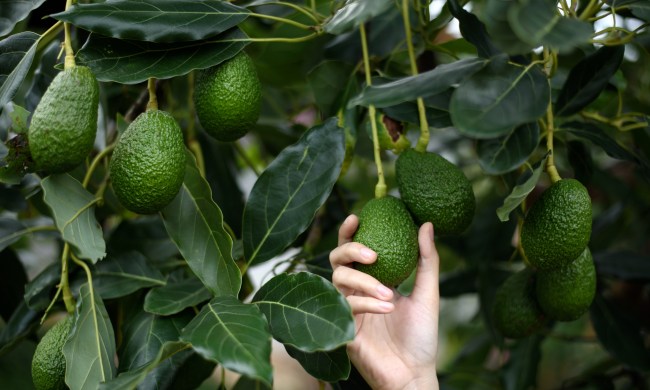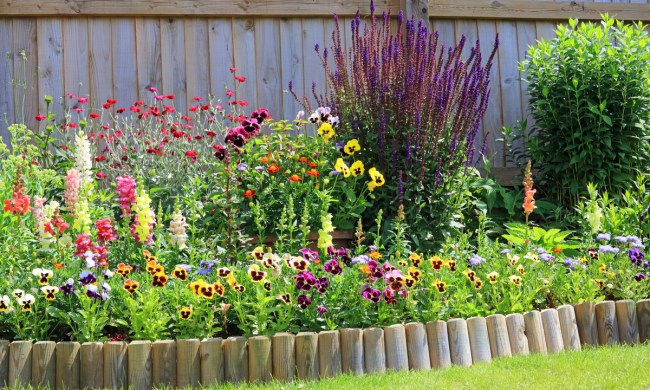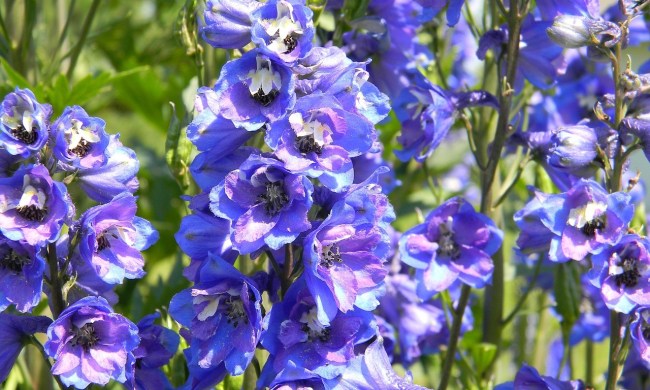Early-blooming spring bulbs like crocus flowers are among the first flowers to bloom every year, followed closely by many other spring annuals and perennials. By the time summer arrives, many flowers have already stopped blooming, leaving your garden a sea of green. That doesn’t have to be the case, though. You can plant bulbs in spring for gorgeous flowers all throughout summer and sometimes even into fall. Here are some of the best bulbs to plant in spring to keep your garden looking vibrant and vivacious all year long.
Calla lily
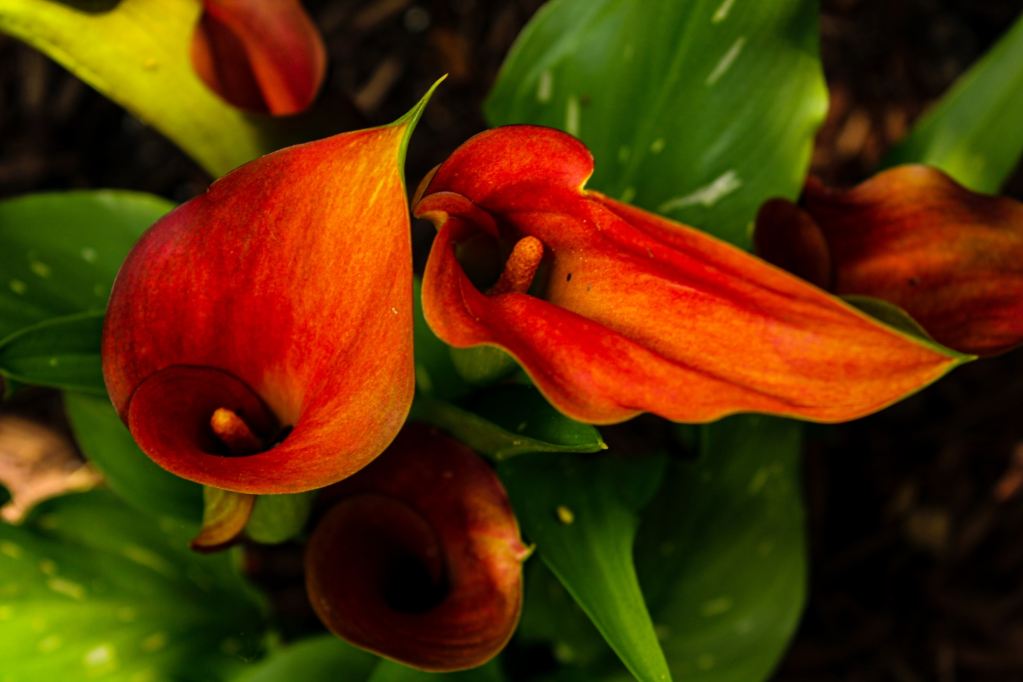
Calla lilies, also called arum lilies, are known for their tall, narrow stems, broad leaves, and elegant, spiral, cup-shaped flowers. Whether seen growing in a garden or as part of a cut flower display, calla lilies are striking. While they are not true lilies, they do come in many of the same colors. They can grow in similar conditions to true lilies, although they are slightly less cold hardy and thrive in full sun to partial shade. You can even grow your calla lilies in containers and indoors, although you should take care not to let your pets chew on them.
Crocosmia
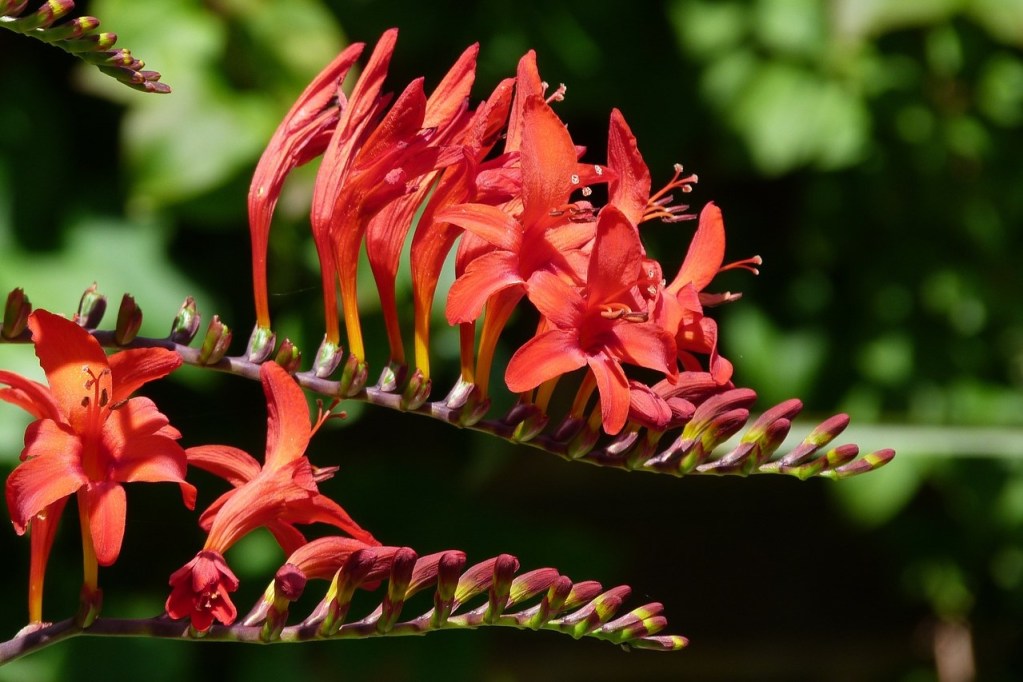
Crocosmia, also called copper tips, are gorgeous fiery flowers that come in many shades of orange and red. They have long, thin stems topped with rows of small to medium flowers. Native to the woodlands found in southern Africa, these stunning flowers are surprisingly cold tolerant and are hardy as far north as USDA hardiness zone 6. They grow best in full sun and rich, well-draining soil, but can also tolerate some shade. In addition to being popular with people, crocosmia is known for attracting hummingbirds with their vibrant flowers. You can even grow them in containers for a lovely portable display.
Eucomis

Eucomis are sometimes called pineapple flowers or pineapple lilies, and for good reason. These unique-looking plants have long leaves surrounding a cylindrical flower spike, with smaller leaves on top of the flower spike. The tiny flowers come in a range of colors, and they grow all the way around the flower spike. It really does look a lot like a colorful pineapple made of flowers! They thrive in full sun, but can tolerate some shade and will also grow in containers. Plant your eucomis bulbs in well-draining soil that’s fairly loose rather than compacted, and water them weekly during hot weather.
Gladiolus

Gladiolus, also called sword lilies, are popular bulbs to plant in spring. With a wide range of colors and tall, tapered flower spikes, these stunning flowers are a perfect fit for most gardens. Whether you choose a vibrant variety, a pastel one, or a multicolored gladiolus, you’re sure to enjoy these striking flowers. To keep your gladiolus plants healthy, plant the bulbs in full sun and sandy, well-draining soil. Gladiolus can tolerate some shade and are fairly drought tolerant (although they bloom better with regular waterings), but they cannot tolerate soggy soil.
Lily

Whether you prefer the bright orange of tiger lilies or the speckled pink of stargazer lilies, there’s something particularly nice about a fresh lily flower. Their long, narrow stems and splayed petals can look elegant or whimsical, depending on the variety, making this a great choice for practically any garden.
Like most of the other bulbs on this list, lilies grow best in full sun and well-draining soil. Soil pH preference varies depending on the type of lily you’re growing, but if you’re unsure, it’s best to stick close to neutral. Lilies can grow in containers or in traditional gardens, but if you live somewhere with high winds or want to grow a lily variety with larger flowers, you may need to use a garden stake to help support the stem.
Nerine

Nerine, also called nerine lilies or guernsey lilies, are perfect if you love the look of lilies but want something a little more subtle. Nerine flowers look quite a bit like lilies, but they are smaller and have a more limited range of colors. Available in white, pink, and red, these elegant flowers are closely related to spider lilies. They aren’t particularly cold tolerant, and are best grown in containers in many regions, so they can be moved indoors when winter arrives. Whether indoors or out, be sure your nerine plants are in full sun and rich, well-draining soil.
These are only a few bulbs to plant in spring, but they are a great place to start. With a range of sizes, shapes, and colors, one of these gorgeous flowers is sure to be a great fit for your home or garden. Start planting your favorites today, and get ready for a lush and vibrant garden this summer!


